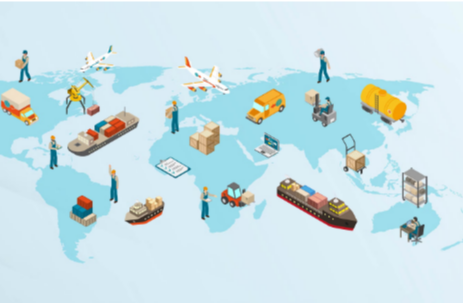Tips for Effective Global Sourcing and Supply Chain Management

In today’s interconnected economy, global sourcing has become a key strategy for businesses seeking efficiency, quality, and cost savings. Companies across industries now look beyond local markets to find trustworthy international suppliers and partners. Platforms like Lianjie Supply Chain make this process easier by connecting businesses with reliable manufacturers and providing transparency throughout sourcing operations. However, managing a global supply chain involves more than selecting suppliers — it requires strategic planning, communication, and consistent risk management.
This guide explores essential tips for building a resilient global sourcing framework and ensuring smooth supply chain performance from start to finish.
1. Understand Your Supply Chain from End to End
Before approaching overseas suppliers, take time to map out your entire supply chain. Understanding where raw materials originate, how they move through production, and how they reach customers reveals weak points and inefficiencies.
A detailed supply chain map helps identify opportunities to optimize, outsource, or diversify. It also highlights potential risks such as supplier dependency, transportation bottlenecks, or political instability in certain regions. Once these elements are visible, businesses can implement smarter sourcing strategies and strengthen operational resilience.
2. Choose the Right Sourcing Locations
Not every sourcing region offers the same advantages. Labor costs, logistics infrastructure, regulations, and trade policies all influence which market is best for your business.
For instance:
China remains a dominant hub for manufacturing consumer goods, electronics, and industrial components.
Vietnam and India have become popular alternatives for companies seeking cost-effective labor and improving supply diversity.
Eastern Europe and Mexico offer geographical proximity advantages for Western markets.
Evaluating the total landed cost — including production, shipping, customs, and lead time — ensures you make informed decisions. Global sourcing platforms help compare and vet suppliers across multiple regions efficiently, minimizing risk and saving time.
3. Build Long-Term Supplier Relationships
Strong supplier relationships are the foundation of successful global sourcing. While short-term contracts may seem cost-efficient, long-term collaboration drives better communication, innovation, and consistency.
Building trust with suppliers encourages open dialogue about production challenges, quality improvements, and process innovations. Regular communication also allows companies to forecast better, plan capacity, and handle unexpected demand surges with minimal disruption.
Ultimately, nurturing long-term partnerships turns suppliers into strategic allies rather than mere vendors, improving both flexibility and competitive advantage.
4. Conduct Thorough Supplier Verification
Before finalizing any agreement, verify each supplier carefully. This means reviewing legal registrations, certifications, financial health, production capacity, and client references. Supplier audits — whether virtual or on-site — help confirm that a manufacturer meets your quality and ethical standards.
Partnering with professional sourcing intermediaries or platforms that vet suppliers in advance can save valuable time and resources. They provide verified supplier data, audit reports, and performance histories, ensuring peace of mind before committing to large-scale production.
5. Balance Cost with Quality
While reducing expenses is a core goal of global sourcing, focusing solely on the lowest price can be risky. Hidden costs like rework, defective products, delayed shipments, or non-compliance penalties often outweigh the initial savings.
Instead, evaluate the Total Cost of Ownership (TCO). Consider all variables — from manufacturing and logistics to customs, warehousing, and returns. This holistic view helps balance affordability with long-term reliability.
Businesses that maintain high-quality standards while controlling costs are better positioned to achieve sustainable growth in global markets.
6. Implement Effective Quality Control Systems
Quality assurance should never be an afterthought. Establish a comprehensive quality control (QC) process that covers every production stage:
Pre-production checks confirm materials and specifications.
In-process inspections monitor product consistency and compliance.
Final inspections before shipment ensure the goods meet your requirements.
These measures reduce the risk of receiving defective products and help build customer trust. Integrating QC data with supplier performance analytics also drives continuous improvement across the supply chain.
7. Optimize Logistics and Inventory Management
Efficient logistics and inventory management are critical to minimizing costs and delays. Choose reliable freight forwarders, monitor real-time shipment tracking, and maintain transparent communication with logistics partners.
Balancing just-in-time inventory with safety stock prevents both overstocking and supply shortages. Modern supply chain software enables predictive analytics to forecast demand more accurately, allowing smarter inventory decisions and reducing waste.
Additionally, consider diversifying transport routes and warehousing options to mitigate risks from political or environmental disruptions.
8. Embrace Technology and Data Analytics
Digital transformation has redefined how supply chains operate. From AI-driven demand forecasting to blockchain-based traceability, technology empowers businesses with real-time visibility and control.
Data analytics tools can identify inefficiencies, forecast potential bottlenecks, and suggest optimization opportunities. Cloud-based sourcing platforms enable teams worldwide to collaborate on supplier selection, procurement, and quality monitoring seamlessly.
By integrating technology into your sourcing and logistics processes, you gain agility, reduce costs, and strengthen decision-making accuracy.
9. Diversify Suppliers to Reduce Risk
Relying heavily on a single supplier or region increases vulnerability to disruptions. Natural disasters, trade disputes, or unexpected factory closures can halt production and impact customer satisfaction.
To reduce these risks, diversify your supplier base across different regions or countries. Maintain alternative suppliers for critical components and review contingency plans regularly. This approach enhances flexibility and safeguards business continuity during unpredictable global events.
10. Ensure Compliance and Sustainability
Compliance with international trade regulations, labor standards, and environmental policies is essential. Sustainable sourcing not only meets legal requirements but also builds trust with customers and stakeholders.
When evaluating suppliers, assess their sustainability practices — including energy use, waste management, and labor conditions. Transparent supply chains attract socially responsible investors and improve brand reputation in increasingly eco-conscious markets.
11. Monitor Performance Continuously
Supply chain management doesn’t end after onboarding suppliers. Continuously monitor key performance indicators (KPIs) such as lead time, defect rates, on-time delivery, and responsiveness.
Regular performance reviews help identify areas for improvement and maintain accountability. Combining performance data with supplier feedback ensures ongoing alignment with your company’s standards and expectations.
12. Plan for Disruptions
Global supply chains are exposed to risks ranging from natural disasters to geopolitical tensions. Having a risk management plan in place helps minimize impact.
Develop backup sourcing options, maintain emergency inventory, and establish rapid communication protocols with partners. Proactive planning ensures faster recovery and less financial loss when unexpected disruptions occur.
Final Thoughts
Effective global sourcing and supply chain management demand more than cost negotiation — they require strategic vision, transparency, and adaptability. Businesses that understand their supply networks, maintain strong supplier relationships, and leverage technology gain a significant competitive edge.
As international trade continues to evolve, organizations that embrace innovation and collaboration will stand out in an increasingly dynamic marketplace. For businesses seeking reliable global sourcing solutions and transparent supplier connections, platforms like lianjer.com make it easier to source smarter, manage risk, and build sustainable global partnerships.







